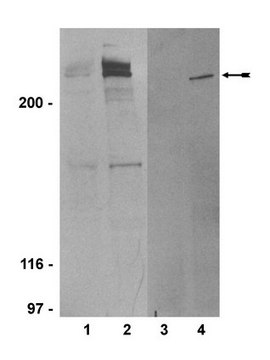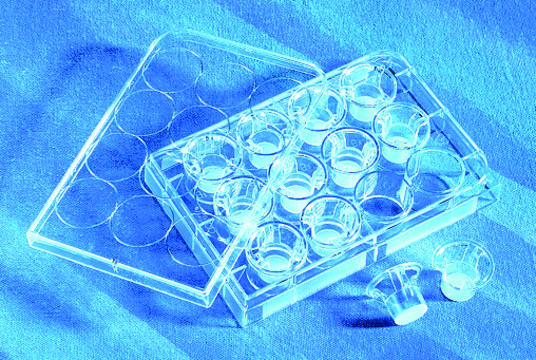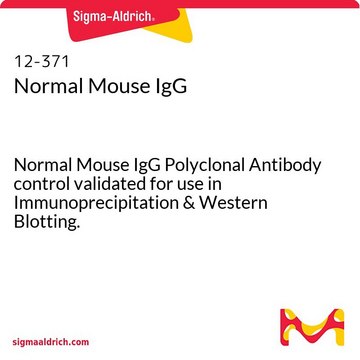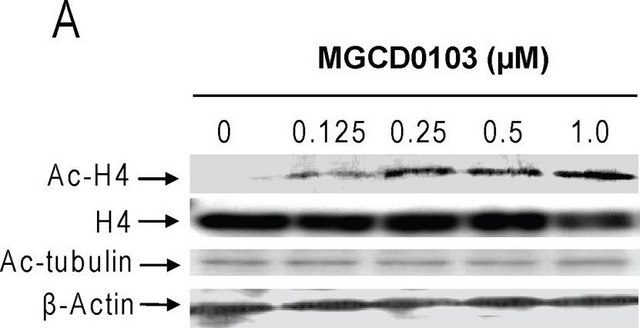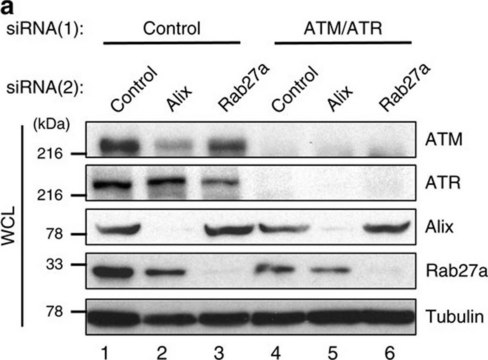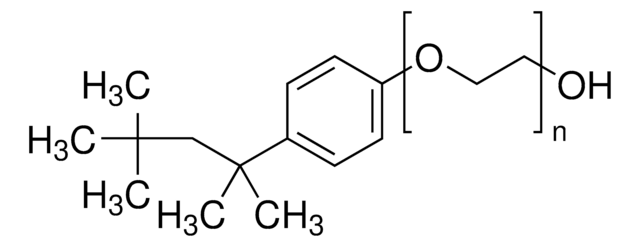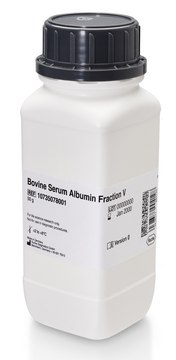MAB3806-C
Anti-phospho-ATM (Ser1981) Antibody, clone 10H11.E12, Ascites Free
clone 10H11.E12, from mouse
Synonym(s):
Serine-protein kinase ATM, Ser1981 phosphorylated, Ataxia telangiectasia mutated, Ser1981 phosphorylated, A-T mutated, Ser1981 phosphorylated
About This Item
Recommended Products
biological source
mouse
Quality Level
antibody form
purified immunoglobulin
antibody product type
primary antibodies
clone
10H11.E12, monoclonal
species reactivity
mouse, human
technique(s)
ELISA: suitable
immunocytochemistry: suitable
immunoprecipitation (IP): suitable
western blot: suitable
isotype
IgG1κ
NCBI accession no.
UniProt accession no.
shipped in
wet ice
target post-translational modification
phosphorylation (pSer1981)
Gene Information
human ... ATM(472)
General description
Specificity
Immunogen
Application
ELISA Analysis: a representative lot was employed as the capture antibody for the detection of interaction between EphA5 and Ser1981-phosphorylated ATM. ATM pSer1981 captured from NCI-H460 human lung cancer cell extracts interacted with recombinant EphA5 cytoplasmic domain, but not with EphA5 extracellular domain or kinase domain (Staquicini, F.I., et al. (2015). J. Biol. Chem. 290(12):7345-7359).
Immunocytochemistry Analysis: A representative lot detected radiation-/IR-induced upregulation of nuclear ATM pSer1981 foci by fluorescent immunocytochemistry staining of methanol-fixed NCI-H460 human lung cancer cells (Staquicini, F.I., et al. (2015). J. Biol. Chem. 290(12):7345-7359).
Immunocytochemistry Analysis: A representative lot detected radiation-/IR-induced ATM Ser1981 phosphorylation by fluorescent immunocytochemistry staining of 1.2% formaldehyde-fixed, 0.1% Triton X-100-permeabilized HT29 cells (Bardelle, C., and Boros, J. (2012). J. Biomol. Screen. 17(7):912-920).
Immunocytochemistry Analysis: A representative lot detected ionizing radiation-/IR-induced ATM Ser1981 phosphorylation by fluorescent immunocytochemistry staining of methanol/acetone-fixed primary human foreskin fibroblasts (HFFs) (Bakkenist, C.J., et al. (2004). Cancer Res. 64(11):3748-3752).
Western Blotting Analysis: A representative lot detected epirubicin-induced ATM Ser1981 (Ser1987 in mouse) phosphorylation in mouse embryonic fibroblasts (MEFs) and human MCF-7 cells (Khongkow, P., et al. (2014). Oncogene. 33(32): 4144-4155).
Western Blotting Analysis: A representative lot detected camptothethin-induced ATM Ser1987 (Ser1981 in human) phosphorylation in primary mouse cortical neurons (Brochier, C., et al. (2013). J. Neurosci. 33(20): 8621-8632).
Western Blotting Analysis: A representative lot detected radiation-/IR-induced ATM Ser1981 phosphorylation in HT29, HeLa, and HEK293T cells (Bardelle, C., and Boros, J. (2012). J. Biomol. Screen. 17(7):912-920).
Western Blotting Analysis: A representative lot detected ionizing radiation-/IR-induced ATM Ser1981 phosphorylation in U2OS cells by Western blotting using whole cell lyates or B56γ immunoprecipitate (Shouse, G.P., et al. (2011). Oncogene. 30(35):3755-3765).
Western Blotting Analysis: A representative lot detected ionizing radiation-/IR-induced ATM Ser1981 phosphorylation in cultured primary human foreskin fibroblasts (HFFs), as well as passage-dependent basal ATM Ser1981 phosphorylation levels in HFFs (Bakkenist, C.J., et al. (2004). Cancer Res. 64(11):3748-3752).
Epigenetics & Nuclear Function
Cell Cycle, DNA Replication & Repair
Quality
Immunocytochemistry Analysis: 4.0 µg/mL of this antibody detected Camptothecin (Cat. No. 208925) treatment-induced increase of nuclear ATM pSer1981 foci in HeLa cells.
Target description
Physical form
Storage and Stability
Other Notes
Disclaimer
Not finding the right product?
Try our Product Selector Tool.
recommended
Storage Class Code
12 - Non Combustible Liquids
WGK
WGK 1
Flash Point(F)
Not applicable
Flash Point(C)
Not applicable
Certificates of Analysis (COA)
Search for Certificates of Analysis (COA) by entering the products Lot/Batch Number. Lot and Batch Numbers can be found on a product’s label following the words ‘Lot’ or ‘Batch’.
Already Own This Product?
Find documentation for the products that you have recently purchased in the Document Library.
Our team of scientists has experience in all areas of research including Life Science, Material Science, Chemical Synthesis, Chromatography, Analytical and many others.
Contact Technical Service